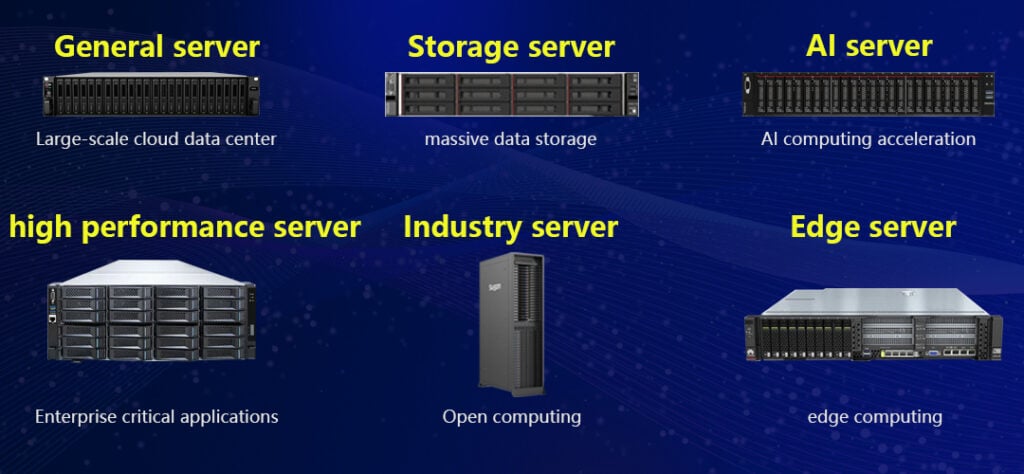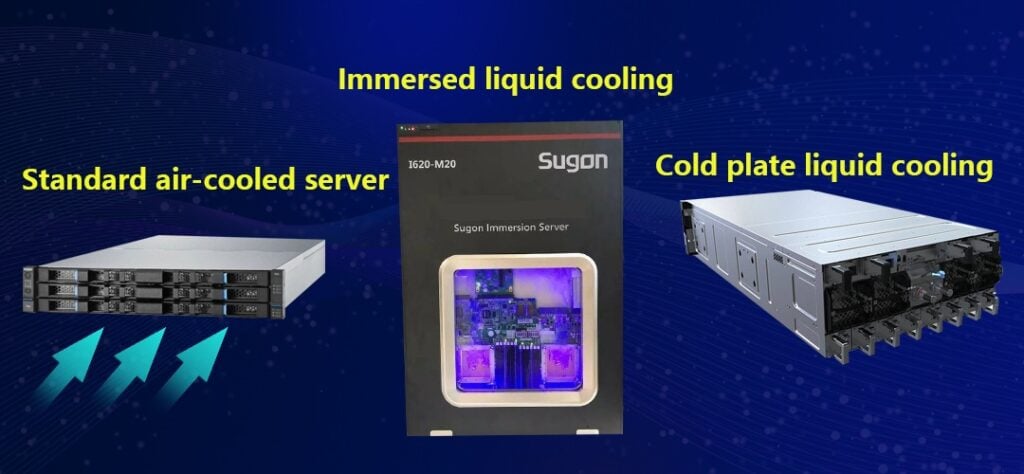There are many ways to classify servers, such as by CPU type, application type, height, CPU brand and number of CPUs, etc. In daily operation and maintenance work, servers are often classified by height and brand, such as 1U and 2U servers; Huawei, Inspur servers, etc.
Table of Contents
ToggleClassification by Product Height

Servers classified by product height
The rack unit is a unit used by the Electronic Industries Alliance (EIA) of the United States to calibrate server, router, network switch and other equipment in computer rooms. One rack unit is called “1U”, and two rack units are called “2U”.
A rack unit is actually 1.75 inches (4.445 cm) high and 19 inches (48.26 cm) wide. As shown in the figure above, the rack is 42U in total. During the racking process, in order to ensure good heat dissipation, the servers need to be at least 1U apart.
Classification by CPU Number

Servers classified by CPU number
- Single server: entry-level, workstation/low-end rack server. Many of the single-socket servers we come into contact with on a daily basis have been in service for more than 10 years.
- Dual server: the mainstream of the market. Currently, about 90% of servers are dual-core products.
- Four-way server: high-end, generally used for enterprise-level ERP, high-performance database, key business virtualization, etc.
- Eight-way server: Positioned at a higher end, used for high-performance computing and key enterprise applications, such as minicomputer products in the financial field
Classification by Product Form

Servers classified by product form
From the initial tower computer to the rack-mounted server with optimized rack space, to the high-density, energy-saving, and management-optimized blade server, and finally to the high-efficiency server, such as the cabinet server, where a whole cabinet is a server.
Classification by Product Application Type

Servers classified by product application type
Enterprises will launch different types of servers for different applications, equipped with CPUs of different performances to adapt to different customer demands.
For example, the TaiShan 200 server, based on the Kunpeng 920 processor, includes 2280E edge type, 1280 high-density type, 2280 balanced type, 2480 high-performance type, 5280 storage type and X6000 high-density type.
Classification by Heat Dissipation Type
Generally, the heat dissipation methods of servers are divided into air cooling and liquid cooling. Air cooling is the most common method, that is, fans and heat sinks are installed inside the server to dissipate heat to the surrounding environment through air flow.
Some high-performance servers or data centers may use liquid cooling technology to introduce heat dissipation media such as water or coolant into the server and remove heat through the flowing liquid.

Servers with different cooling types
